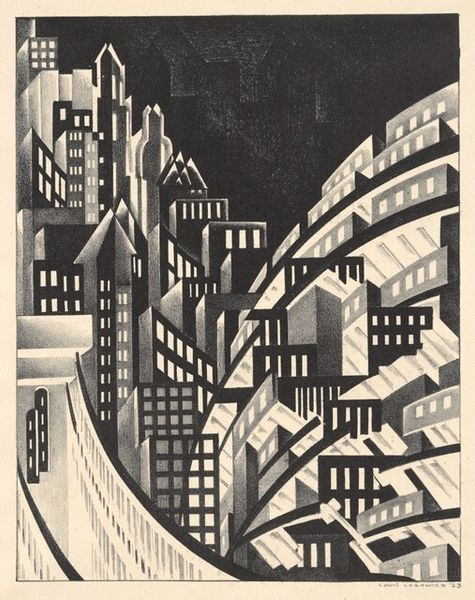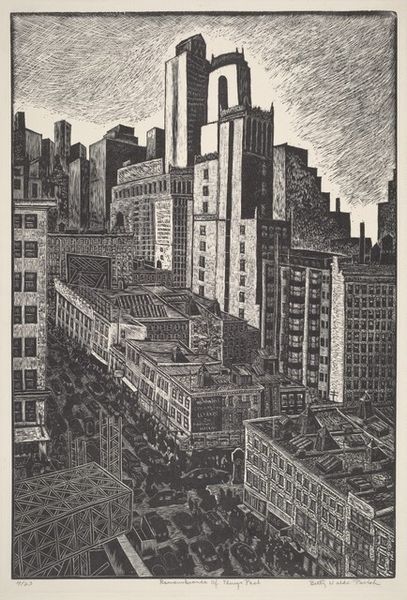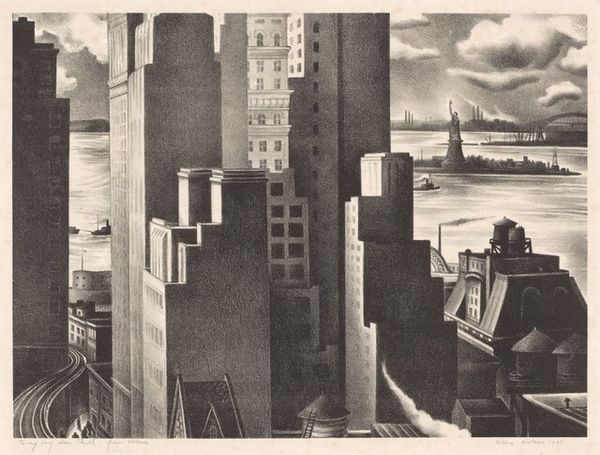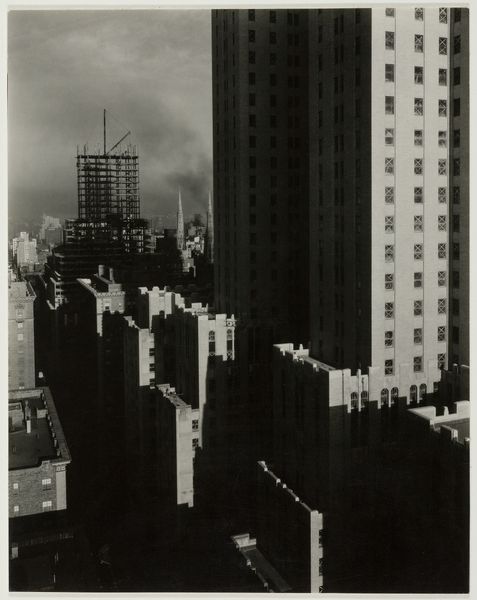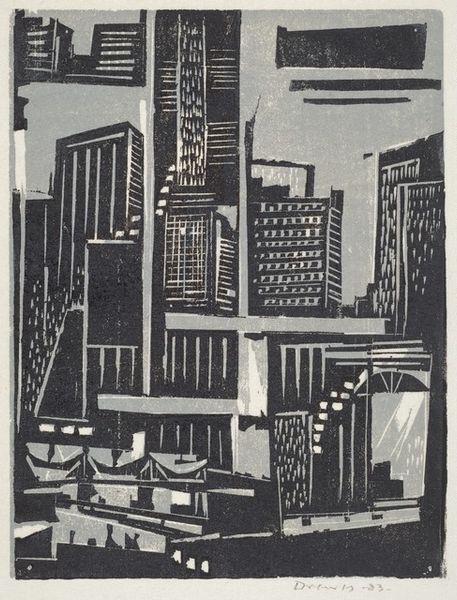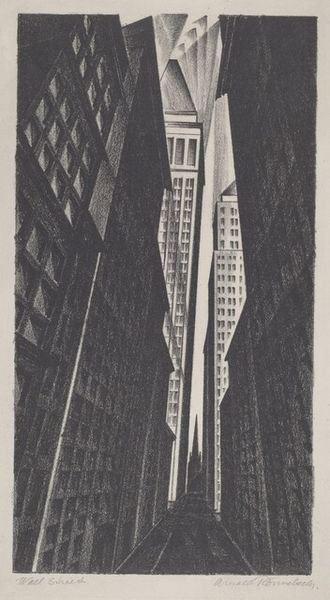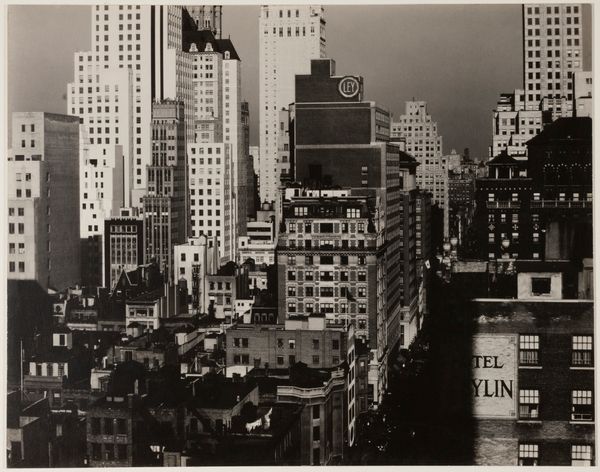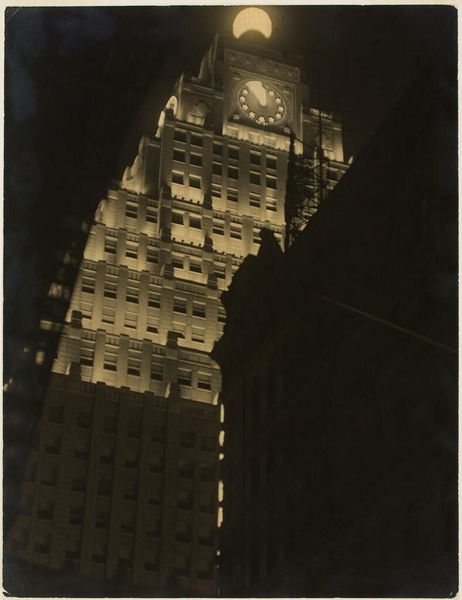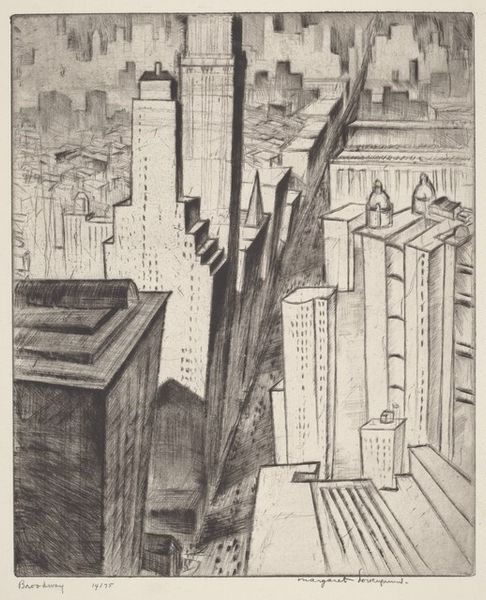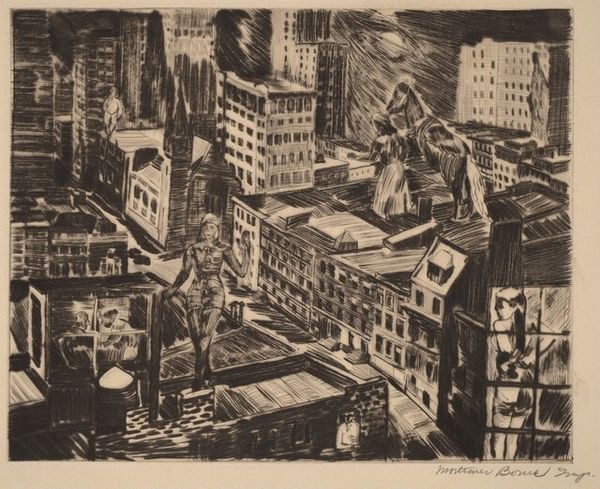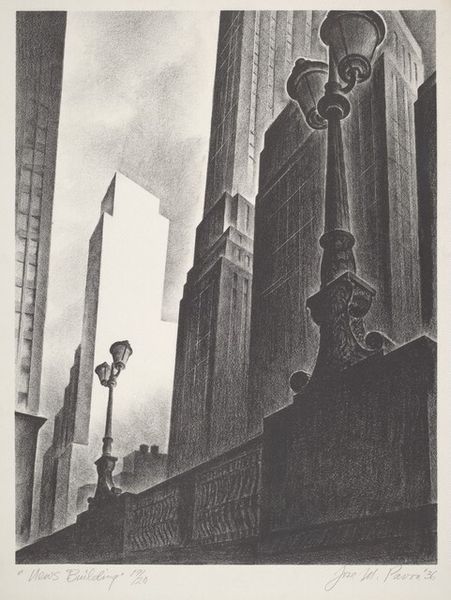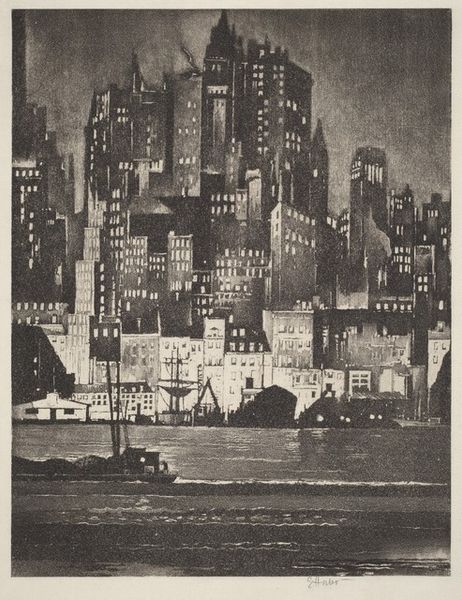
drawing, print, graphite
#
drawing
# print
#
graphite
#
cityscape
#
modernism
Copyright: National Gallery of Art: CC0 1.0
Editor: Here we have Albert Bloch's "Southern Exposure," created in 1934 using graphite. The high-contrast scene makes the buildings appear almost ominous. What aspects of its history can you tell us about? Curator: Bloch made this in the middle of the Great Depression, when a sense of starkness and even isolation gripped much of the country. There’s an emphasis on verticality that mimics both aspiration and constraint. Editor: Constraint, how so? Curator: Well, consider who had access to these architectural marvels. Were they symbols of collective progress, or did they mostly serve corporate power? Consider that the skyscrapers of this era frequently became symbols of unchecked capital, despite the fact that they visually dominated cityscapes. The shadows here are especially long, like looming anxieties. Do you notice the vantage point and the choice to look down on neighboring buildings? Editor: Yes, I hadn’t thought about that, that downward gaze makes me feel both separate and as though something is amiss. Is the work also a political commentary? Curator: Potentially. By reducing the urban landscape to a study of shadow and form, Bloch invites viewers to reflect on how architectural power affects public sentiment and societal order. Art during this era often explored themes of social critique. Editor: It really emphasizes the sense of detachment and highlights the tension between grand constructions and the wider social reality. Thanks, I had not previously picked up on all of those embedded visual references. Curator: Absolutely, this work, viewed through a historical lens, prompts a valuable reflection on the intersections of architecture, power, and public feeling during a really volatile era.
Comments
No comments
Be the first to comment and join the conversation on the ultimate creative platform.
